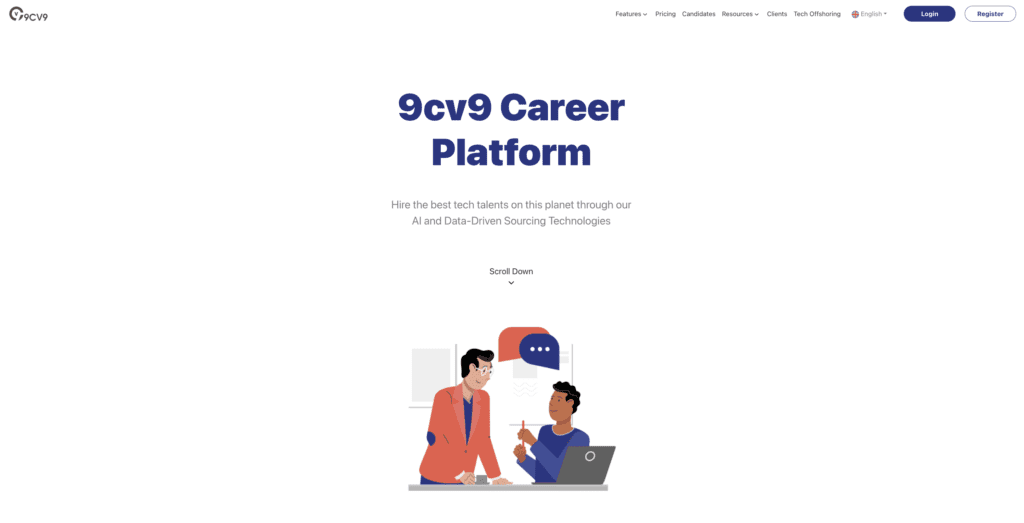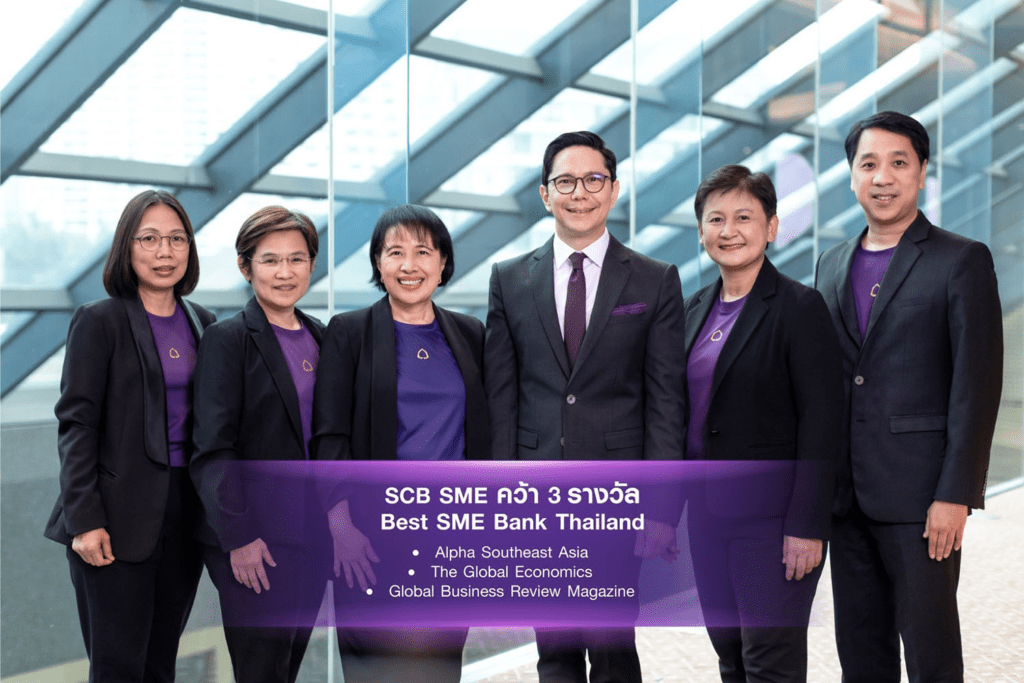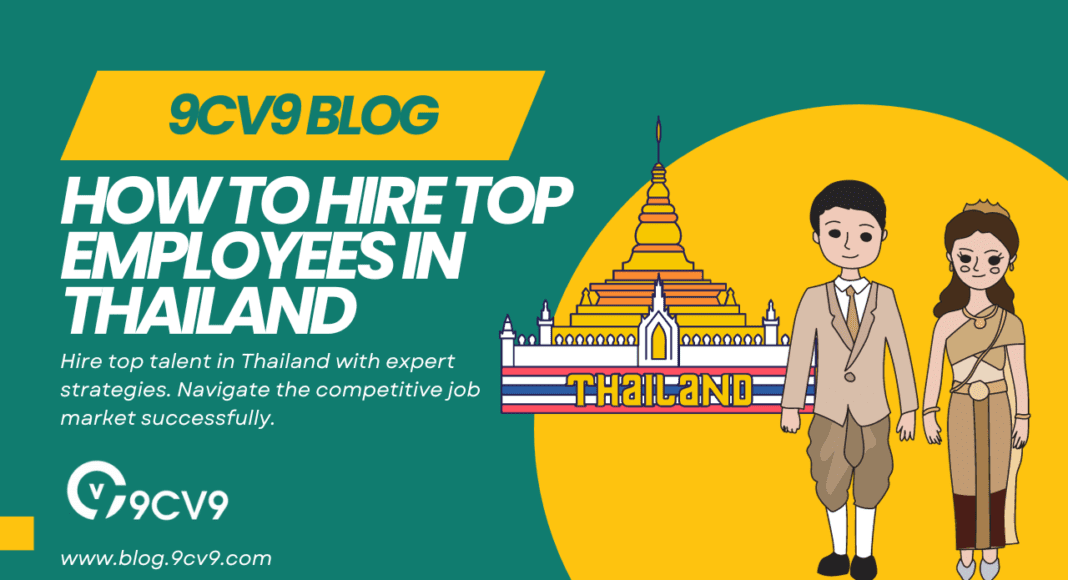Key Takeaways
- Cultural Sensitivity Matters: Understanding Thai values and customs is essential for successful hiring in Thailand’s diverse workforce.
- Digital Tools for Efficiency: Utilize AI-powered recruitment, data-driven decisions, and job portals to identify and attract top talent.
- Retention is the New Challenge: Beyond hiring, focus on career growth, work-life balance, and recognition to retain top employees in Thailand.
In the vibrant landscape of Thailand’s job market, the pursuit of excellence in hiring top employees is a journey that combines both art and science.
As businesses continue to thrive and expand across this beautiful Southeast Asian nation, the demand for exceptional talent has never been more crucial.
The quest to unearth and secure top-tier professionals can be likened to prospecting for rare gems; it requires a refined strategy, a keen eye, and an understanding of the terrain.
Imagine, for a moment, that Thailand is your treasure trove, brimming with brilliant individuals who can elevate your organization to new heights.
The tantalizing prospect of hiring top talent beckons, but to seize this opportunity, you must navigate the intricacies of Thailand’s dynamic job market with skill and precision.
In this comprehensive guide, we embark on a journey that transcends the ordinary and delves deep into the art of hiring in the ‘Land of Smiles.’
Our mission is to equip you, the discerning HR professional or business leader, with the knowledge, strategies, and insights needed to not only hire top employees but to retain them and ensure lasting success.
Understanding the Thai Advantage
Thailand is a nation teeming with cultural richness, breathtaking landscapes, and a thriving economy.
Its strategic location in the heart of Southeast Asia makes it an attractive hub for businesses seeking growth in the Asia-Pacific region.
With key industries like hospitality, manufacturing, technology, and tourism making significant strides, the potential for securing top talent has never been brighter.
However, within the folds of this opportunity, unique challenges and considerations come into play.
Thailand’s workforce is characterized by a rich cultural heritage, marked by values, customs, and expectations that significantly influence the employment landscape.
To excel in hiring, you must understand not only the professional attributes you seek but also the cultural nuances that underpin your engagement with potential employees.
This Guide: Your Compass in the World of Thai Talent Acquisition
This comprehensive guide isn’t just another article; it’s your compass in the labyrinth of Thai talent acquisition.
As we embark on this journey together, we will cover every aspect of hiring top employees in Thailand, offering you a well-rounded perspective and practical strategies for success.
From understanding the Thai job market and identifying the qualities that make an employee truly exceptional to crafting compelling job descriptions and mastering hiring tools, we’ll leave no stone unturned.
You will also discover invaluable insights into interview techniques tailored to Thai culture and learn effective job search strategies that resonate with local talent.
Moreover, as you delve deeper into the content, you’ll encounter case studies and success stories, real-world examples that illuminate the path to hiring excellence.
These tales of triumph will demonstrate that hiring top talent in Thailand is not an abstract dream but a tangible and achievable reality.
In conclusion, this guide is not just about recruiting; it’s about transformation.
It’s about transforming your hiring practices, your organization, and the lives of the talented individuals you’ll bring into your fold.
So, prepare to embark on a journey that transcends borders and transforms your approach to hiring top employees in Thailand.
As you venture further into this guide, remember that success in Thailand’s job market isn’t just about finding talent; it’s about finding the right talent, the top talent.
Let’s embark on this exciting odyssey together and unearth the gems that will elevate your organization to unparalleled heights.
Before we venture further into this article, we like to share who we are and what we do.
About 9cv9
9cv9 is a business tech startup based in Singapore and Thailand, with a strong presence all over the world.
With over six years of startup and business experience, and being highly involved in connecting with thousands of companies and startups, the 9cv9 team has listed some important learning points in this overview of the guide on How To Hire Top Employees In Thailand.
If your company needs recruitment and headhunting services to hire top-quality employees in Thailand, you can use 9cv9 headhunting and recruitment services to hire top talents and candidates. Find out more here, or send over an email to [email protected].
Or just post 1 free job posting here at 9cv9 Hiring Portal in under 10 minutes.
How To Hire Top Employees In Thailand
- Understanding the Thai Job Market
- Identifying Top Employee Qualities
- Crafting a Compelling Job Description
- Utilizing Hiring Tools and Technology
- Interviewing Techniques
- Job Search Strategies
- Attracting and Retaining Top Talent
1. Understanding the Thai Job Market
Economic Overview
- Thailand’s economy has been on an upward trajectory, and it has been the second-largest economy in Southeast Asia, only behind Indonesia.
- Key industries in Thailand include manufacturing, tourism, agriculture, and services, each contributing significantly to the job market.

Job Market and Labor Force
- Thailand boasts a robust and diverse labor force, with a population of approximately 69 million people.
- The unemployment rate in Thailand had been relatively low, around 0.86%, indicating a tight labor market with high competition for skilled workers.
The Rise of the Digital Economy
Tech and E-commerce Sector
- Thailand’s digital economy has been on the rise, with significant investments in e-commerce, fintech, and technology startups.
- The eCommerce market in Thailand is projected to grow by 10.89% (2023-2027) resulting in a market volume of US$24.81bn in 2027.
- Example: Lazada, an e-commerce platform, has experienced substantial growth in Thailand, offering businesses a platform to reach consumers.

IT and Software Development
- The demand for IT professionals, including software developers and data scientists, has been steadily increasing.
- Example: Thai software developers have gained recognition for their skills, with companies like Agoda establishing their tech centers in Thailand.

Cultural Nuances in the Thai Job Market
Cultural Values in the Workplace
- Thai culture places a strong emphasis on respect and hierarchy in the workplace.
- Understanding the concept of “Kreng Jai,” or polite deference, is crucial when dealing with colleagues and employees.
- Example: A manager’s ability to navigate “Kreng Jai” can foster a harmonious work environment.

Job Security and Loyalty
- Thai employees often value job security and long-term commitment to their employers.
- Example: Offering stability and opportunities for growth can be attractive to top talent.
The Importance of Language Skills
Language Proficiency
- While English is widely spoken, especially in the business world, having employees with proficiency in Thai can be a significant advantage.
- Example: Companies like Grab and Shopee require employees to communicate effectively in Thai to cater to local customers.
Multilingual Workforce
- Multilingualism is valued, especially in customer-facing roles, given Thailand’s diverse population and its popularity as a tourist destination.
- Example: Hotel chains like Marriott seek employees who can speak multiple languages to cater to international guests.
Government Initiatives and Labor Regulations
Work Permits and Visa Regulations
- Thailand’s government has specific regulations for foreign workers, including work permits and visa requirements.
- It’s essential for businesses to understand and comply with these regulations when hiring foreign talent.
- Example: The Board of Investment (BOI) in Thailand offers incentives for businesses that invest in certain industries, which can impact hiring decisions.
Skill Development Initiatives
- The Thai government has initiated programs to develop the skills of the local workforce, offering opportunities for upskilling and training.
- Example: The Skill Development Promotion Act aims to enhance the skill set of the workforce.
Understanding the Thai job market is an intricate journey that combines economic insight, cultural awareness, and knowledge of regulatory landscapes.
As Thailand continues to flourish economically and technologically, businesses have an unprecedented opportunity to tap into the rich pool of talent this nation offers.
By comprehending the dynamics of the job market, embracing cultural nuances, and navigating government initiatives, you can unlock the true potential of Thailand’s job market and secure top talent for your organization.
2. Identifying Top Employee Qualities in Thailand
Adaptability and Flexibility
- Top employees possess the ability to adapt to changing circumstances and demonstrate flexibility in their roles.
- Example: During the COVID-19 pandemic, many employees in Thailand adapted to remote work, demonstrating their flexibility in challenging times.
Problem-Solving Skills
- Exceptional problem solvers have the capacity to identify and address complex challenges efficiently.
- A study listed complex problem solving as one of the top skills for the workforce in Southeast Asia.
Communication Skills
- Effective communication is a cornerstone of success in the workplace, especially in a culturally diverse environment like Thailand.
- Example: Thai employees who can communicate proficiently in English often excel in multinational companies.
Team Collaboration and Leadership
- The ability to work well in teams and lead others is highly valued.
- Companies in Thailand prioritize teamwork and collaboration skills in their hiring processes.
Positive Attitude and Resilience
- Employees with a positive attitude and resilience can weather challenges and maintain a productive mindset.
- Example: During the 2011 floods in Thailand, many employees displayed resilience in the face of adversity, aiding their companies’ recovery efforts.
Continuous Learning and Adaptation
- Top talent is committed to ongoing learning and professional growth.
Cultural Awareness and Sensitivity
- In a culturally diverse country like Thailand, employees who demonstrate cultural awareness and sensitivity are highly valued.
- Example: International organizations like the United Nations seek employees with a deep understanding of Thai culture to navigate diplomacy effectively.
The Role of Emotional Intelligence
Empathy and Relationship Building
- Employees with high emotional intelligence excel in building relationships and understanding the needs of their colleagues and clients.
- A study found that emotional intelligence is one of the top soft skills in demand in Southeast Asia.
Conflict Resolution
- Emotional intelligence aids in resolving conflicts peacefully, contributing to a harmonious work environment.
- Example: Employees with strong emotional intelligence often serve as mediators during workplace conflicts.
Quantifying Soft Skills
Assessment Tools
- Companies in Thailand increasingly use psychometric assessment tools to evaluate soft skills like communication and problem-solving.
Training and Development
- Employers invest in training and development programs to nurture and quantify soft skills.
Identifying top employee qualities is both an art and a science.
It involves recognizing the importance of adaptability, problem-solving, effective communication, teamwork, and leadership.
The role of emotional intelligence, cultural awareness, and sensitivity cannot be overstated in a culturally diverse and dynamic job market like Thailand’s.
By quantifying soft skills through assessment tools and investing in training and development, businesses can ensure they are hiring and nurturing the top talent required for sustainable success in Thailand’s competitive job market.
3. Crafting a Compelling Job Description to Hire Top Talents in Thailand
Importance of a Well-Crafted Job Description
- A well-structured job description serves as the foundation for attracting top talent.
- According to a study, job descriptions that provide clear information receive 30% more applications.
Also, do have a read at our most popular guide: Mastering the Art of Writing Effective Job Descriptions: A Comprehensive Guide
Incorporating Keywords and SEO
- To ensure job listings reach the right candidates, keyword optimization is essential.
- Example: If you’re hiring for a software engineer in Bangkok, ensure your job description includes relevant keywords like “software engineer in Bangkok” and “software development skills.”
- Use keyword research tools like Google Keyword Planner to identify the most relevant keywords.
- Example: Include long-tail keywords like “senior Java developer with AWS experience” for specific roles.
Also check out our SEO-optimised job description templates to save your time: List of Top Tech Job Description Templates (SEO-Optimised).
Structure and Content of Job Descriptions
Job Title and Summary
- The job title should be clear and specific, accurately reflecting the position.
- Example: “Senior Content Marketing Manager” instead of a generic “Marketing Manager.”
- The summary should provide a brief overview of the role and its significance within the organization.
- Include key details like the department, location, and immediate supervisor.
Key Responsibilities and Duties
- List the core responsibilities and duties of the role.
- Use bullet points for clarity and readability.
- Highlight the most crucial tasks and responsibilities.
- Example: “Manage content strategy and production for the blog 9cv9” for a Content Marketing Manager role.
Qualifications and Requirements
- Clearly define the qualifications and requirements for the position.
- Example: For a software developer role, specify required qualifications like “Bachelor’s degree in Computer Science” and technical skills such as “proficiency in Java and JavaScript.”
Interestingly, we have an article on the Effective Strategies for Assessing Skills and Qualifications of Job Applicants. Do have a read about it.
Company Culture and Values
- Briefly describe the company’s culture and values.
- Example: “We value creativity, teamwork, and continuous learning.”
- This provides candidates with insights into the work environment and helps attract those who align with the company culture.
Salary and Benefits Information
Transparent Compensation
- Include salary and benefits information, or at least a salary range, to attract candidates with the right expectations.
- A study found that transparent salary information helps attract and retain employees.
Unique Perks and Benefits
- Highlight unique perks and benefits offered by the company.
- Example: “Generous health insurance, flexible work hours, and access to company-sponsored training programs.”
- Data shows that 57% of job seekers consider benefits and perks as a top factor in evaluating job offers.
Incorporating Thai Cultural Nuances
Local Language Proficiency
- Specify language requirements, such as proficiency in Thai, if necessary for the role.
- Example: “Fluency in Thai is required for customer-facing roles.”
- Data reveals that Thailand has a moderate English proficiency level, so specifying language requirements is vital.
Emphasizing Cultural Sensitivity
- Highlight the importance of cultural sensitivity and understanding in the job description.
- Example: “Experience working in a culturally diverse environment or knowledge of Thai customs is a plus.”
Crafting a compelling job description in Thailand is an art that combines keyword optimization, clear structure, transparency in compensation, and cultural sensitivity.
A well-crafted job description not only attracts top talent but also sets the stage for a successful hiring process.
By incorporating these strategies, you can create job listings that resonate with candidates and improve the quality of applicants for your open positions.
4. Utilizing Hiring Tools and Technology to Hire Top Employees in Thailand
Technology’s Impact on Recruitment
- The use of hiring tools and technology has transformed the recruitment process, making it more efficient and effective.
- Employers in Thailand are known to use 9cv9 Free Job Portal to maximise their job hiring applicant pipelines.

Applicant Tracking Systems (ATS)
- ATS software helps in tracking and managing job applications, making it easier to screen and identify top candidates.
- Example: 9cv9 ATS, Lever, BambooHR, and Workable are popular ATS tools used in Thailand.
AI-Powered Recruitment
- AI tools can analyze resumes and applications, helping to shortlist candidates based on specific criteria.
Video Interview Platforms
- Video interview platforms enable remote assessments, saving time and resources.
- Example: Spark Hire and VidCruiter are widely used video interview platforms in Thailand.

Data-Driven Decision Making
Predictive Analytics
- Predictive analytics can help identify the best-fit candidates based on historical data.
- A study found that 70% of companies in Southeast Asia use data to make better hiring decisions.
Behavioral Assessments
- Tools for behavioral assessments help evaluate candidates’ soft skills and cultural fit.
- Example: The Predictive Index is used by companies in Thailand for behavioral assessments.

Sourcing and Job Matching
Job Portals
- Job portals like 9cv9, LinkedIn, and Indeed are instrumental in reaching a broad audience of potential candidates.
- A survey by JobStreet found that 84% of job seekers in Thailand use online job portals in their job search.
- Source: JobStreet – Digital Talent Recruitment and Career Path
Also, read on the top Free Job Portals in Thailand to kickstart your job posting process to hire top employees in Thailand.
Social Media Recruitment
- Utilizing social media platforms like Facebook and Instagram for job postings and reaching passive candidates.
- Example: Many startups in Thailand use Instagram to showcase their company culture and job openings.
The Role of Mobile Recruitment
Mobile-Friendly Platforms
- With the proliferation of smartphones, it’s vital to have mobile-friendly job listings and application processes.
- Data shows that mobile internet penetration in Thailand reached 141% in 2023, underlining the significance of mobile accessibility.
Mobile Job Search Apps
- Mobile job search apps like 9cv9 and JobStreet have gained popularity in Thailand, providing candidates with convenience and accessibility.
Customization for the Thai Market
Localization and Language
- Ensure that hiring tools and job listings are available in the Thai language, as well as in English.
Cultural Sensitivity
- Customizing tools to be culturally sensitive to Thai values and practices is crucial for effective recruitment.
- Example: Understanding the significance of Songkran, the Thai New Year, and accommodating leave requests.
Leveraging hiring tools and technology is instrumental in finding and hiring top talent in Thailand’s competitive job market.
The digital transformation of recruitment, from ATS and AI-powered tools to data-driven decision making, enhances efficiency and effectiveness.
Incorporating sourcing and job matching through job portals and social media recruitment expands the reach to a wider audience.
Moreover, ensuring mobile-friendliness and customization for the Thai market is essential for engaging with potential candidates effectively.
By embracing these tools and strategies, businesses can optimize their hiring processes, attract top talent, and stay competitive in Thailand’s ever-evolving job market.
5. Mastering the Art of Interviewing in Thailand
The Significance of Effective Interviews
- Interviews are a critical phase in the hiring process, where you get to interact directly with potential employees. It’s a pivotal opportunity to assess not only their skills but also their cultural fit and alignment with your organization’s values.
- A survey indicates that 63% of candidates report a negative experience during the interview process can deter them from accepting a job offer.
Cultural Nuances in Thai Interviews
- Interviews in Thailand come with unique cultural aspects that influence the process. Understanding these nuances is vital for conducting successful interviews.
- Example: Thai candidates may express deference and humility during interviews, making it important to look beyond surface responses to gauge their true potential.

Preparing for the Interview
Role-Specific Preparation
- Begin by ensuring you’re well-prepared for the role you’re hiring for. This includes a deep understanding of the job description and the qualifications required.
- Example: If you’re hiring a Content Marketing Manager for a blog like 9cv9, familiarize yourself with the specific skills and industry expertise required for the role.

Structured Interview Framework
- Create a structured interview framework with a clear list of questions and assessment criteria. This helps maintain consistency across interviews.
- Data from Google’s Project Oxygen suggests that structured interviews lead to better hiring outcomes.
Conducting the Interview
Active Listening
- During interviews, focus on active listening to understand the candidate’s responses better.
- Example: If a candidate discusses their previous achievements, ask follow-up questions to gain deeper insights into their accomplishments.

Behavioral Questions
- Behavioral questions that ask candidates to share specific examples from their past experiences can provide valuable insights into their abilities and characteristics.
- Example: Ask a candidate to describe a challenging project they managed and the steps they took to achieve a successful outcome.
Cultural Fit Assessment
- Assessing cultural fit is essential in Thailand’s diverse workforce. Ask questions that delve into the candidate’s values and their alignment with your organization’s culture.
- Example: Inquire about the candidate’s experience working in a culturally diverse environment and how they adapted to it.
Using Assessments and Testing
Technical Skills Assessment
- For technical roles, consider using skills assessments to evaluate the candidate’s proficiency.
- Example: If you’re hiring a software developer, a coding test or technical challenge can gauge their coding skills.

Psychometric Assessments
- Assessments like personality and cognitive tests can provide insights into a candidate’s traits and problem-solving abilities.
- Example: Employ a personality assessment to gauge the candidate’s compatibility with your organization’s values and culture.
Embracing Diversity and Inclusion
Diversity in Interview Panels
- To ensure a fair and inclusive interview process, consider having diverse interview panels that reflect different perspectives.
- A report by McKinsey shows that diverse teams are more likely to outperform their peers.
Inclusive Language
- Use inclusive language during interviews to create an environment where candidates from various backgrounds feel comfortable.
- Example: Avoid gender-biased or culturally insensitive language that could alienate candidates.
Post-Interview Assessment
Debrief and Evaluation
- After each interview, have a structured debriefing process where interviewers can evaluate the candidate’s performance.
- Example: Use a scoring system to rate candidates based on their responses to specific criteria.
Candidate Feedback
- Provide constructive feedback to candidates, regardless of the outcome. This fosters a positive candidate experience and enhances your employer brand.
- A study found that 83% of candidates would refer others to a company where they had a positive experience.
Mastering the art of interviewing is essential for hiring top employees in Thailand.
The country’s unique cultural nuances and diverse workforce require a thoughtful and structured approach to interviews.
By preparing thoroughly, actively listening, asking behavioral questions, using assessments, embracing diversity and inclusion, and conducting post-interview assessments, you can significantly enhance your ability to identify and secure top talent that aligns with your organization’s values and objectives.
Thailand’s talent landscape is rich and diverse, and with the right interviewing techniques, you can unlock the full potential of your workforce.
6. Search Strategies to Hire Top Employees in Thailand
Diverse Job Search Avenues
- Thailand offers a range of job search avenues, making it essential to explore various channels to find top talent.
- A survey found that 52% of job seekers in Thailand use online job portals in their job search.
Employer Branding
- Building a strong employer brand can attract passive candidates who are already familiar with your organization.
- Example: Companies like Google and Toyota have strong employer brands in Thailand, making them attractive to job seekers.
Leveraging Online Job Portals
Popular Job Portals
- Thailand has several popular job portals like 9cv9, JobThai, JobStreet, and LinkedIn.
Advanced Filters and Matching Algorithms
- Job portals offer advanced filters and matching algorithms to help identify top candidates quickly.
Social Media Recruitment
LinkedIn for Professional Networking
- LinkedIn is not only a job portal but also a valuable platform for networking and reaching passive candidates.
- Example: Companies in Thailand often use LinkedIn to connect with potential employees and industry professionals.
Facebook and Instagram for Company Culture Showcase
- Social media platforms like Facebook and Instagram can be used to showcase company culture and job openings.
- Example: Many companies in Thailand use Instagram to give potential employees a glimpse into their workplace culture and values.
Networking and Employee Referrals
Networking Events
- Participating in industry-specific events and conferences provides opportunities for networking and discovering top talent.
- Example: HR and industry-specific conferences and events are excellent places to connect with professionals.
Employee Referral Programs
- Employee referrals can be a highly effective way to find top talent.
- A study found that employee referrals produce the highest-quality candidates.
- Example: Many companies in Thailand use Jobsrefer Referral Portal to get employees to refer potential candidates.
Professional Associations and Industry Groups
Membership in Industry Associations
- Membership in industry-specific associations can provide access to a pool of professionals in your field.
Collaboration with Recruitment Agencies
Utilizing Recruitment Agencies
- Recruitment agencies have extensive networks and can help identify and engage top talent.
- Using 9cv9 Recruitment Agency in Thailand can accelerate your hiring process by up to 9x.
Also, our team has researched and put together the top list of world-class recruitment agencies in Thailand to engage and to use to hire your employees in Thailand.
Searching for and hiring top employees in Thailand is a multifaceted endeavor that involves exploring diverse avenues.
From online job portals and social media to networking, employee referrals, and professional associations, a strategic and multifaceted approach is essential.
Embracing technology and online platforms, coupled with traditional methods like networking and recruitment agencies, can help you uncover the top talent that will drive your organization’s success in Thailand’s competitive job market.
7. Attracting and Retaining Top Talent in Thailand
Competitive Talent Landscape
- Thailand’s job market is highly competitive, making the attraction and retention of top talent a formidable challenge.
Importance of a Strong Employer Brand
- A strong employer brand is crucial for attracting and retaining top talent.
- Example: Companies like PwC and Unilever have strong employer brands in Thailand, making them desirable workplaces.

Attracting Top Talent
Competitive Compensation and Benefits
- Offering competitive salary packages and benefits is a key factor in attracting top talent.
- Data from Mercer’s Total Remuneration Survey indicates that the overall salary increase in Thailand was expected to be 5% in 2022.
Learning and Development Opportunities
- Top talent is often drawn to organizations that invest in employee growth and development.
- Example: Companies like SCG and Bangkok Bank offer extensive training and development programs for their employees.
Company Culture and Values
- A positive company culture and alignment with the company’s values are important for attracting top talent.
- Example: Companies like Grab and Agoda have strong cultures of innovation and collaboration.
Diversity and Inclusion
- Embracing diversity and inclusion in the workplace can make your organization more attractive to a wide range of top talent.
Retaining Top Talent
Competitive Compensation and Rewards
- Retaining top talent requires offering competitive compensation, bonuses, and rewards.
- Example: Some Thai companies provide performance-based bonuses and financial incentives to top-performing employees.
Career Advancement Opportunities
- Providing opportunities for career growth and advancement is crucial for retaining top talent.
Work-Life Balance
- Promoting a healthy work-life balance can help in retaining top talent.
- A survey shows that 69% of Thai professionals value work-life balance as a top priority.
Recognition and Appreciation
- Regular recognition and appreciation of employees’ contributions can boost morale and retention.
- Example: Many Thai companies have employee recognition programs and awards for outstanding performance.
Mentoring and Development Programs
Mentorship and Coaching
- Providing mentorship and coaching programs can help employees grow and feel valued.
- Example: Companies like SCB offer mentorship programs for their employees.

Continuous Learning
- Encouraging and supporting continuous learning and skill development is essential for employee retention.
- Data from a survey indicates that 74% of employees in Thailand are willing to learn new skills or completely retrain.
Attracting and retaining top talent in Thailand requires a multifaceted approach that encompasses competitive compensation, opportunities for growth, a positive company culture, diversity and inclusion, and recognition.
The highly competitive job market necessitates a strong employer brand that resonates with top talent.
By prioritizing the right strategies and investing in employee development, companies can not only attract top talent but also ensure their long-term commitment and contributions to the organization’s success.
Conclusion
In the ever-evolving and dynamic job market of Thailand, the pursuit of hiring top talent is a journey marked by both challenges and opportunities.
As we conclude this comprehensive guide on “How to Hire Top Employees in Thailand,” it is evident that success in this endeavor requires a strategic blend of art and science.
The principles we’ve explored, the strategies we’ve unveiled, and the insights we’ve shared form a roadmap that will guide you toward the acquisition of exceptional talent that can propel your organization to new heights.
Understanding the Thai Advantage
Thailand, with its vibrant economy, diverse industries, and cultural richness, is a treasure trove of talent.
The country’s strategic location in the heart of Southeast Asia makes it a thriving hub for businesses seeking growth in the Asia-Pacific region.
However, navigating the intricacies of the Thai job market requires more than just a well-crafted job description or the adoption of advanced hiring tools.
It demands a profound understanding of the unique cultural nuances that shape the professional landscape.
The Thai Workforce: A Tapestry of Talent
Thai employees bring a wealth of diverse experiences and skills to the table, reflecting the country’s rich heritage. Their values of respect, loyalty, and adaptability are cornerstones of their professional personas.
To excel in hiring top talent in Thailand, it’s not enough to seek proficiency in technical skills alone.
Understanding “Kreng Jai,” the art of polite deference, and the significance of maintaining harmony within the workplace are essential skills for HR professionals and business leaders.
Crafting a Compelling Job Description: The First Step to Success
The journey begins with crafting a compelling job description that resonates with potential candidates.
The job description serves as your organization’s ambassador to the talent landscape, and as such, it should be meticulously composed to attract and engage the most exceptional individuals.
By optimizing job descriptions for SEO, customizing them for the Thai market, and ensuring clarity and transparency in compensation and benefits, you can enhance your appeal to top talent.
Identifying Top Employee Qualities: The Key to Effective Hiring
Top employees possess a unique blend of qualities that set them apart from the crowd.
Adaptability, problem-solving skills, effective communication, teamwork, and leadership are attributes that define excellence in the workplace.
Embracing emotional intelligence, emphasizing empathy, and harnessing the power of predictive analytics and behavioral assessments are integral to recognizing and nurturing these qualities in potential hires.
Utilizing Hiring Tools and Technology: The Digital Advantage
The digital era has revolutionized recruitment and hiring processes.
The adoption of Applicant Tracking Systems (ATS), AI-powered recruitment tools, and video interview platforms has streamlined the search for top talent.
Data-driven decision making, aided by predictive analytics and behavioral assessments, adds a layer of objectivity to the hiring process, ensuring you make the best choices for your organization.
Search Strategies: Navigating the Talent Landscape
Exploring diverse avenues for talent acquisition is essential in Thailand’s competitive job market.
Online job portals, social media recruitment, networking, and employee referrals each offer unique pathways to finding top talent.
Customizing your approach to the Thai market, accounting for cultural sensitivity and language proficiency, can make your search strategies even more effective.
Attracting and Retaining Top Talent: The Ultimate Goal
Attracting top talent is a formidable challenge, but retaining them is equally vital for an organization’s success. Competitive compensation, career advancement opportunities, a healthy work-life balance, recognition, and appreciation play pivotal roles in retention.
Mentorship and development programs empower employees to grow and contribute at their fullest potential, further solidifying their loyalty to the organization.
In conclusion, this guide isn’t just a collection of insights and strategies; it’s a roadmap to transforming your organization’s approach to hiring and retaining top employees in Thailand.
The art of hiring in the ‘Land of Smiles’ requires more than just a well-crafted job description or the adoption of advanced hiring tools.
It calls for a profound understanding of the unique cultural nuances that shape the professional landscape and a commitment to excellence at every stage of the hiring journey.
As you embark on this transformative journey, remember that success in Thailand’s job market isn’t just about finding talent; it’s about finding the right talent, the top talent.
This guide equips you with the knowledge and strategies you need to identify, attract, and retain the exceptional individuals who will elevate your organization to unparalleled heights.
Thailand’s treasure trove of talent awaits, and this guide is your key to unlocking its full potential.
If your company needs HR, hiring, or corporate services, you can use 9cv9 hiring and recruitment services. Book a consultation slot here, or send over an email to [email protected].
If you find this article useful, why not share it with your hiring manager and C-level suite friends and also leave a nice comment below?
We, at the 9cv9 Research Team, strive to bring the latest and most meaningful data, guides, and statistics to your doorstep.
To get access to top-quality guides, click over to 9cv9 Blog.
People Also Ask
How to hire people in Thailand?
To hire people in Thailand successfully, consider cultural nuances, utilize AI-powered recruitment tools, optimize job descriptions for SEO, and embrace a diverse workforce for a competitive edge.
How to hire foreign workers in Thailand?
Hiring foreign workers in Thailand involves adhering to legal requirements, obtaining work permits, and embracing diversity. Ensure compliance and offer a welcoming environment to build a global team.
How do I find and hire talents?
Finding and hiring talents involves crafting compelling job descriptions, utilizing hiring tools, and implementing data-driven strategies. Leverage online job portals, social media, and networking to attract top talent.






























![Writing A Good CV [6 Tips To Improve Your CV] 6 Tips To Improve Your CV](https://blog.9cv9.com/wp-content/uploads/2020/06/2020-06-02-2-100x70.png)


